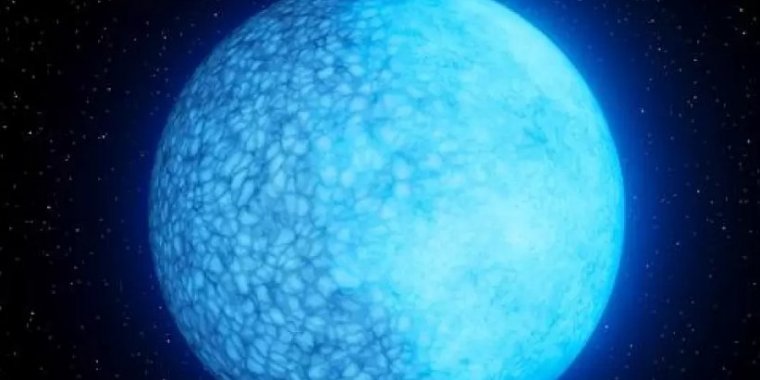| News / Space News |
Two-faced star exposed
In a first for white dwarfs, the burnt-out cores of dead stars, astronomers have discovered that at least one member of this cosmic family is two-faced. One side of the white dwarf is composed of hydrogen, the other is made up of helium.

This artist's concept shows the two-faced white dwarf nicknamed Janus. Photo: K. Miller, Caltech/IPAC
White dwarfs are the scalding remains of stars that were once like our sun. As the stars age, they puff up into red giants; eventually, their outer fluffy material is blown away and their cores contract into dense, fiery-hot white dwarfs. Our sun will evolve into a white dwarf in about 5 billion years.
The newfound white dwarf, nicknamed Janus after the two-faced Roman god of transition, was initially discovered by the Zwicky Transient Facility (ZTF), an instrument that scans the skies every night from Caltech's Palomar Observatory near San Diego.
Researcher Ilaria Caiazzo at Caltech, who led the study, had been searching for highly magnetized white dwarfs, which she and her team previously found using ZTF.
One candidate object stood out for its rapid changes in brightness, so Caiazzo decided to investigate further with the CHIMERA instrument at Palomar, as well as HIPERCAM on the Gran Telescopio Canarias in Spain's Canary Islands. The data confirmed that Janus is rotating on its axis every 15 minutes.
The team used an instrument called a spectrometer to spread the light of the white dwarf into a rainbow of wavelengths that contain chemical fingerprints.
The data revealed the presence of hydrogen when one side of the object was in view (with no signs of helium), and only helium when the other side swung into view.
What would cause a white dwarf floating alone in space to have such drastically different faces? The researchers acknowledge that they are baffled but have come up with some possible theories. One is that we may be witnessing Janus undergoing a rare phase of white dwarf evolution.
"Not all, but some white dwarfs transition from being hydrogen- to helium-dominated on their surfaces," Caiazzo explains. "We might have caught one such white dwarf in the act."
Adds co-author James Fuller, an astrophysicist at Caltech, "Magnetic fields may lead to lower gas pressures in the atmosphere, and this may allow a hydrogen 'ocean' to form where the magnetic fields are strongest. We don't know which of these theories is correct, but we can't think of any other way to explain the asymmetric sides without magnetic fields." (U.S. National Science Foundation)
YOU MAY ALSO LIKE





